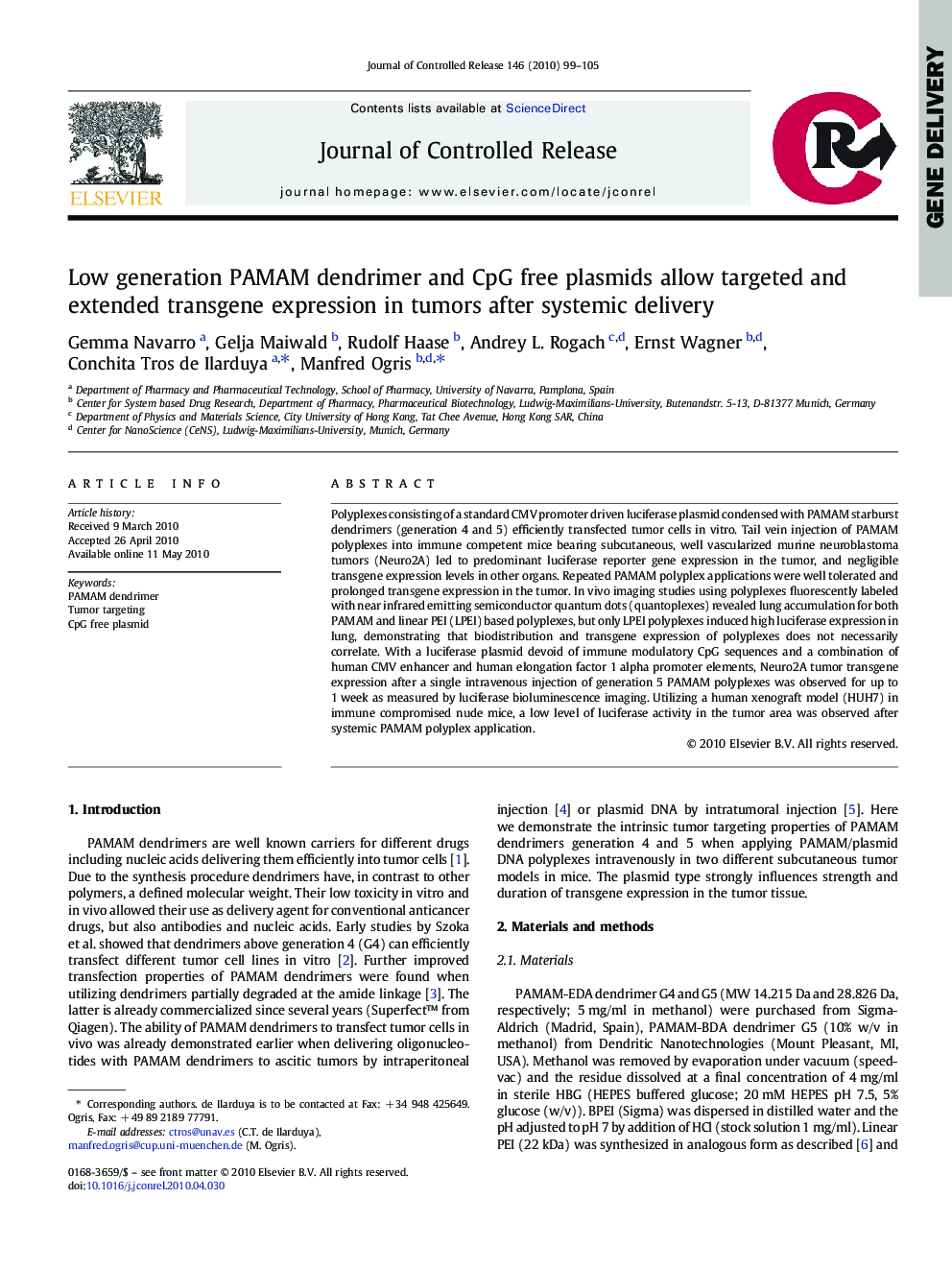| Article ID | Journal | Published Year | Pages | File Type |
|---|---|---|---|---|
| 1425926 | Journal of Controlled Release | 2010 | 7 Pages |
Polyplexes consisting of a standard CMV promoter driven luciferase plasmid condensed with PAMAM starburst dendrimers (generation 4 and 5) efficiently transfected tumor cells in vitro. Tail vein injection of PAMAM polyplexes into immune competent mice bearing subcutaneous, well vascularized murine neuroblastoma tumors (Neuro2A) led to predominant luciferase reporter gene expression in the tumor, and negligible transgene expression levels in other organs. Repeated PAMAM polyplex applications were well tolerated and prolonged transgene expression in the tumor. In vivo imaging studies using polyplexes fluorescently labeled with near infrared emitting semiconductor quantum dots (quantoplexes) revealed lung accumulation for both PAMAM and linear PEI (LPEI) based polyplexes, but only LPEI polyplexes induced high luciferase expression in lung, demonstrating that biodistribution and transgene expression of polyplexes does not necessarily correlate. With a luciferase plasmid devoid of immune modulatory CpG sequences and a combination of human CMV enhancer and human elongation factor 1 alpha promoter elements, Neuro2A tumor transgene expression after a single intravenous injection of generation 5 PAMAM polyplexes was observed for up to 1 week as measured by luciferase bioluminescence imaging. Utilizing a human xenograft model (HUH7) in immune compromised nude mice, a low level of luciferase activity in the tumor area was observed after systemic PAMAM polyplex application.
Graphical abstractFigure optionsDownload full-size imageDownload as PowerPoint slide
